|
by Mai Mang
This piece was originally written for the catalog of Over the Wall, a group exhibition of contemporary Chinese, Russian, Ukrainian, German, Israeli and New York based artists, which was held from November 12 to December 30, 2009, at the Art Next Gallery, New York. The featured artists included Alexander Melamid, Anton S. Kandinsky and Marc Ecko (New York), Ilya Chichkan, Alexander Roitburd and Yuri Solomko (Ukraine), Alexey Salmanov (Russia), Ai Weiwei, Zheng Lianjie, Zhang Hongtu, Zhang Dali, Ji Shengli, Chen Weiming (China), Lorenz Haarmann (Germany) and Robert Bery (Israel). The exhibition was curated by David Rong and Alex Demko. All photos were taken at the opening of Over the Wall, November 12, 2009, Art Next Gallery, New York. 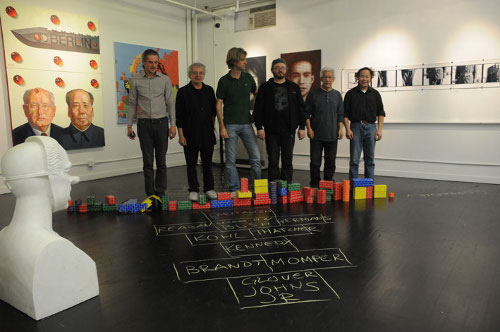
1 What is rational is actual and what is actual is rational.
2 Forcing one to face it, to recognize its legitimacy and necessity. Equivalent to historical necessity in Hegelian philosophy. 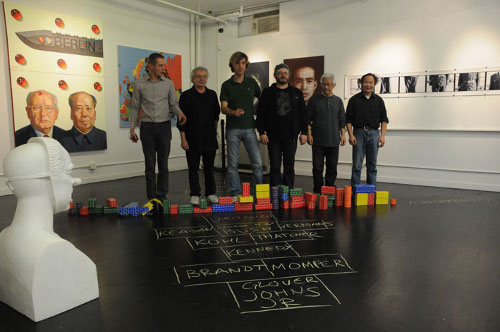
3 In fact, completely man-made, although possessing solid material form, not possessing real inevitability.
4 Like a terminal historical situation, everyone is playing a predesignated role. For instance, in Ji Shengli's Policemen, the policemen stand in a row against the wall, facing the bare-bottomed, provocative lone artist, both sides knowing well they are acting, looking serious yet almost eliciting a smile. This is like a scene directly derived from a comedy of the absurd, but neither party can awake from this situation. This work reminds one of Yue Minjun's nightmarishly meaningful Execution.
5 In Ai Weiwei's Guard, a young armed policeman disappears from head to toe behind his impersonal uniform, his body a wall, warning anyone who dares to trespass it. Of course, this warning is at once rude and feeble, even naïve and self-deceiving, as if covering one's eye with a fig leaf.
6 Ruins of an eternal standoff, the Great Wall or the Berlin Wall, from Ukraine to Israel—all various walls from another world, ready to be torn down yet forever erect, have long prepared for their own isolations. 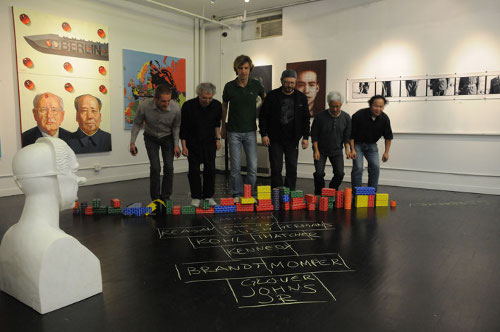
7 Once embodied in space, continually posed across time, twenty years after its fall, the Berlin Wall still stands right in one's view.
8 The end of history: the hot topic after the Cold War—that wall covered by pop and graffiti art contains a huge hollow hole within, as if ruins already sentenced to expire are demanding an assessment from the entirely opposite direction.
9 Itself a utopia of hope, which has artificially created this side and the other side, within expectation and beyond expectation. 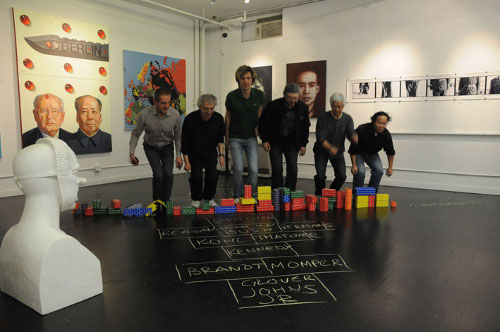
10 A high jump mark, forcing individual artists to overcome gravity, produces vertical instead of horizontal imagination, and evokes an insuppressible, nearly vertiginous sensation of pleasure. No wall, no art of upward transgression or rebellion. 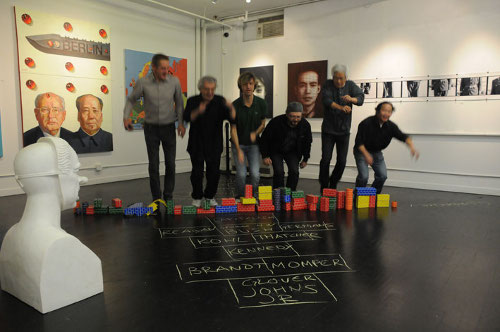
11 Hic Rhodus, hic saltus—Rhodes is here, here you jump! What is requested here is the true manifestation of free will.
12 "A throw of the dice will never abolish chance." The decisive leap over the wall is, however, destined to overturn the long night of necessity's tyranny over the individual in history. The seemingly childlike installation by Alexander Melamid easily hits the target. 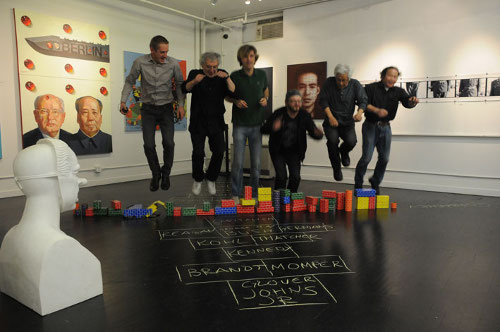
13 The old Chinese proverb says: "A desperate dog jumps over the wall." But the truth is: at that very moment of jumping over the wall of history, man is his own freewheeling master. 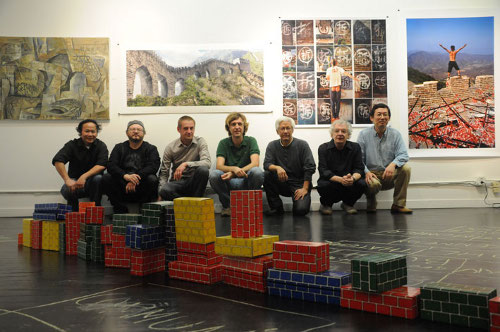
From left to right: Chen Weiming (China/USA), Anton Kandinsky (Ukraine/USA), Yuri Solomko (Ukraine), Lorenz Haarmann (Germany), Zhang Hongtu (China/USA), Alexander Melamid (Russia/USA), David Rong (China/USA). |